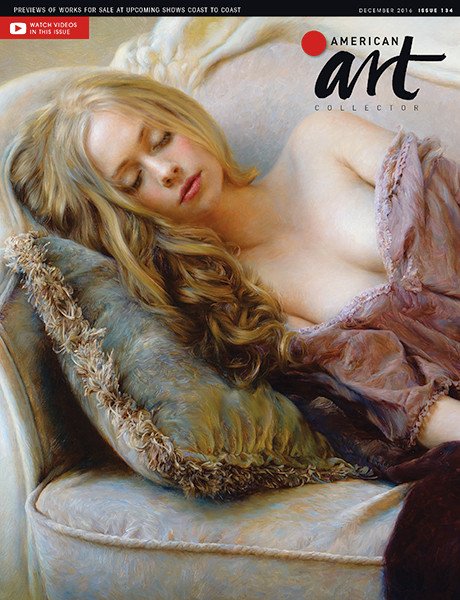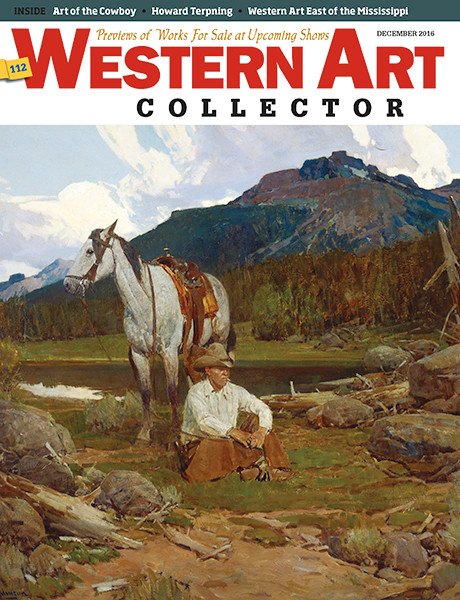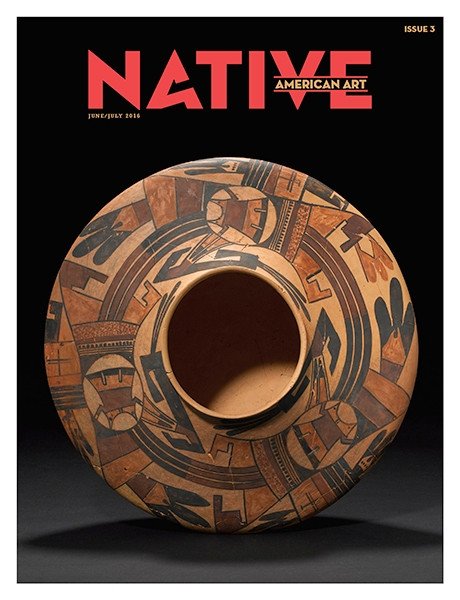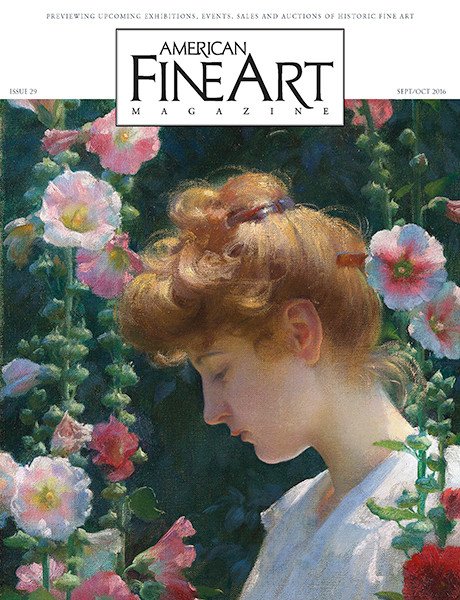Grand Prize
Grand Prize is a four-page editorial feature in American Art Collector magazine
 Let the Light In, watercolor on Aquabord, 24 x 18” (60 x 45 cm)
Let the Light In, watercolor on Aquabord, 24 x 18” (60 x 45 cm)Daniela Werneck
Texas, USA
Natural Flow
Daniela Werneck started creating human sculptures from shells she’d find on the beaches of Rio de Janeiro as a child. That innate love of creation propelled her into the art world as she grew up. “I have always enjoyed observing the human figure and its body language,” she says. “My paternal grandmother had a collection of statuettes that I would spend hours just admiring every time I went to visit her.” When the artist turned 16, her father enrolled her in private drawing classes, which she attended for seven years. “I learned a lot from my teacher,” Werneck reflects. “I drew everything there, from the simplest object to complex perspectives and live models. He taught me to observe things and to pay attention to the smallest details of a work, even if it was just a fruit on the table. I think this experience made me even more detail-oriented, which is why I really like my watercolors, which are rich in detail.”
Werneck spends hours each day studying her subjects, which typically depict girls and young women in flowy, vintage dresses and restful expressions. Often, her scenes feature soft, dappled light and floral, geometric patterns. “For the background usually I do tiles that represent my Brazilian and Portuguese roots. The birds, which are abundant in the tropical country where I grew up, are also used a lot in my paintings.”
The artist also doesn’t work on paper, but rather, a special clay surface. “The colors I use are important in my technique too,” Werneck adds. “I never work with more than five colors in a painting. I really like a very limited color palette, and I create other colors based on what I have there. I feel safer and more comfortable that way.”
She continues, “I really like to let things happen in relation to my work. I don’t plan or imagine the next work because I like to put on the canvas what I am feeling when I start studying them. So, when a model comes for a photoshoot, I let her choose the clothes she likes or feels comfortable in. Sometimes these girls go crazy with the vintage wedding dresses I have here! It makes the photoshoot more fun and easier for everyone. I let things flow naturally throughout the process.”
My Inspiration
The model is my niece Giovana, who lives in Portugal and came to spend a few days with me here in Texas. She posed for me almost every day. It was late February, and the days were beautiful, with breathtaking sunlight. Giovana posed for me at the entrance of my house, and the sunlight that bathed my entrance was beautiful on her skin and the draped translucent nightgown she was wearing. The combination of light, model and moment was the main inspiration for this piece and other pieces that came from that same day.
My Design Strategy
When I looked at the photos I took of Giovana while she was here with me, there were over 2,000 images. I fell in love with her twisted body language in a particular photo I used as a reference for the composition of this painting, but the face was out of focus and the image was not complete, so I created the composition in Photoshop using three different images of Giovana to assemble the figure creating the basic composition of the work. Then I studied the colors I would use and the size of the painting.
My Working Process
This painting sat in my studio for about two months. I was very happy with the result of the figure, but I was not satisfied with the background, which was changed twice during the painting process, but I still didn’t like it, so I left the painting on an easel behind me so that I could look at it from time to time. Something was missing in the composition. Then one night I woke up and the image of the bird on a door knocker came to me. I was so excited! The bird, the door knocker and the hanged key were added to the painting in the morning. That gave me such huge satisfaction.
Contact Details
Email: danielawerneck@live.com
Website: danielawerneck.com
Second Prize
Second Prize is a two-page editorial feature in American Art Collector magazine
 Intuition // Wound, charcoal and graphite on board, 30 x 22” (76 x 55 cm)
Intuition // Wound, charcoal and graphite on board, 30 x 22” (76 x 55 cm)Amanda Kazemi
California, USA
My Inspiration
Familiar experiences inspire my work. These experiences are meaningful slices from the larger world, revealing the layers of humanity. Many of us have undoubtedly felt a drop in our stomach, a bubble in our throat, or our eyes well up with tears at some point in our lives. I draw attention to these moments to take the wind out of their sails, as if to say that we are complex beings who share in our happiness and grief. It is an extension of my inner world to yours, inviting you to look within our shared experience.
My Design Strategy
Much of my design process involves first interpreting emotions or experiences and designating a symbol to them. A hawk can represent an incessant predatory nature, while flowers exist in juxtaposition as a reminder of the delicate balancing act our mind endures. Then, the relationship between the symbols helps to inform the message. For example, in Intuition // Wound, the figure encapsulates the tension in her body, pointing to the disharmony from within. She is also the observer from above, witnessing her life.
My Working Process
Because I primarily work in graphite and charcoal, the tonal values must mimic and further the overall message. I remove all elements from the background to create an unaccompanied and personal experience in Intuition // Wound. The legs are submerged in a deep gray, both visually balancing the artwork and toying with the inner world versus the outer world. The flairs of light from the flowers against the dizzying patterns on the hawks are meant to reflect a stillness in chaos.
Contact Details
Email: amandakazemi@gmail.com
Website: amandakazemi.com
Third Prize
Third Prize is a one-page editorial feature in American Art Collector magazine
 Veil, graphite and ink on paper, 18 x 12” (45 x 30 cm)
Veil, graphite and ink on paper, 18 x 12” (45 x 30 cm)Jessie Babin
New Brunswick, Canada
My Inspiration
During the time I began working on the concept for Veil, I found myself reflecting on how we never truly show our authentic selves to others. Instead, we present different versions of ourselves to different people, depending on the circumstances and the nature of our relationships. While others may perceive what they believe is the real you, there is always a layer between who you truly are and the version you choose to portray.
My Design Strategy
The design for this drawing was heavily inspired by an older self-portrait I created a few years ago, which I felt was a raw and honest representation of myself at that time. I used the reference photo from that drawing as input for an AI, and while the visual output resembles me, it is ultimately a simulated version of myself. This imitation of me was used as the reference for this drawing. Overlaying the portrait is a translucent set of lines, acting as a quasi-veil, symbolizing the layers that I believe most of us hide behind.
My Working Process
The portrait is created entirely in graphite, with the lines drawn in ink. As with all my drawings, I start by sketching a line drawing to establish proportions, then gradually build up the tones using a combination of graphite powder and various pencils. Once the portrait was complete, I enlisted an AI to write lines of code that generated the design for the lines. This design was then imported into software that communicates with a robot holding a pen, instructing it to draw the lines onto the portrait. A drawing that is the result of collaboration between human and machine.
Contact Details
Email: contact@jessiebabin.com
Website: jessiebabin.com
Finalists
Each receives an Award Certificate and a one-year subscription to International Artist magazine PLUS having their work seen worldwide by international galleries looking for new talent.
 Medusa, oil on linen, 36 x 24” (91 x 60 cm)
Medusa, oil on linen, 36 x 24” (91 x 60 cm)Richard Ferguson
Oregon, USA
My Inspiration
The inspiration for the painting of Medusa originated from the Greek myth that included Perseus as the hero, Pegasus, the winged horse, and Medusa. In some versions of the myth, Medusa was originally a beautiful priestess who was raped by the sea god Poseidon in the temple of the goddess Athena. The part of the myth I chose to paint was the immediate aftermath of the trauma. Most artwork of her depicts the curse of Athena. The image of a hideous creature with serpents for hair, whose gaze could turn living flesh to stone. I instead, chose that moment after the rape of a frightened, young woman who, through no fault of her own, is about to transform into a monster.
My Design Strategy
My design strategy was worked out in my mind and preliminary drawings and doodles on my phone. I use an editing program to compose the elements until they mirror my vision. I also use my photographs to construct a photo montage that visualizes how I want the painting to appear.
My Working Process
I then transfer the image to the canvas in charcoal, sealing the charcoal drawing with transparent gesso before applying the underpainting. I work in oils from this point on. I try to be as complete with my underpainting as possible but most always redraw with paint as the drawing becomes obscured. There are usually three distinct layers involved in my painting process but I will invariably edit and repaint during the process. Once the completed work is dry to the touch, I use Gamvar varnish to protect and restore flattened color.
Contact Details
Email: richard@fergusonfinearts.com
Website: fergusonfinearts.jimdofree.com
 Metanoia, oil on canvas, 60 x 60” (152 x 152 cm)
Metanoia, oil on canvas, 60 x 60” (152 x 152 cm)Diana Tremaine
Montana, USA
My Inspiration
In today’s linguistics, “metanoia” means a transformative change of heart. My vision for this painting was to create an image about the world I wanted to see. I put out flyers in my hometown of Bozeman, Montana, requesting “models of any race, any ethnicity, any gender.” These are the beautiful souls who showed up. We talked about what the project meant to me, and to each of them, and then we got to work.
My Design Strategy
This composition was directed by the meaning I sought. I wanted the figures to suggest the spokes of a wheel—the wheel, of course, symbolizing unity, wholeness and infinity. I wanted all lines and shapes to lead to the intersecting points of the figures, their resolution highest where they come together. The hand in the lower right corner purposefully provides an entry to the painting and, being slightly reminiscent of the hand of God in the Sistine Chapel, alludes to the spirituality born of these connections.
My Working Process
Critical to this process was creating comfort and ease with the models. Next, the photo session. I spent months looking at the images, trying to feel my way to what positions spoke most authentically to me. After choosing the poses I wanted, I started laying in the drawing with raw sienna directly on the sage/gray ground I chose for the image. I worked from the center out, knowing I only wanted full resolution where the figures came together.
Contact Details
Email: diana@dianatremaine.com
Website: dianatremaine.com
 A Songbird Holding on to the Child Within, oil, 30 x 20” (76 x 50 cm)
A Songbird Holding on to the Child Within, oil, 30 x 20” (76 x 50 cm)Nanci France-Vaz
New Jersey, USA
My Inspiration
I met Mary in 2017 at the Stone Pony. Her voice moved me deeply—it was raw, emotional and unforgettable. As a visual artist, I strive to evoke the same feeling through paint. Her childlike spirit and authenticity were so present, I felt compelled to paint her. She embodies that 5-year-old wonder all true artists should hold onto. I saw myself in her and knew I had to capture that energy on canvas.
My Design Strategy
Mary’s busy schedule allowed only a one-day photoshoot. She arrived wearing a childlike aqua and pink dress, which felt perfect. I added a black beret for contrast against her gray hair. I aimed for a minimalist palette with gray, black and accents of pink and aqua. A patterned background was too distracting, so I chose simplicity to focus on her expression. The values and design emphasized her warmth and the emotional connection I felt.
My Working Process
I begin with a color study to connect emotionally and explore values. The reference photo is only a springboard, as I rely on imagination. I gridded the panel for accuracy, avoiding projection to preserve natural proportions. I work dark to light, back to front, using three paint layers on the focal point. Edges and contrast guide the viewer’s eye. I stop before overworking—what’s left unsaid can be more powerful. Mary’s dress, for instance, becomes looser and more suggested.
Contact Details
Email: nancifrance@gmail.com, nanci@nancifrancevaz.com
Website: nancifrancevaz.com
 Arrival, acrylic and silver leaf, 26 x 20” (66 x 50 cm)
Arrival, acrylic and silver leaf, 26 x 20” (66 x 50 cm)Mary Carroll
Virginia, USA
My Inspiration
Jessie Mann, daughter of celebrated photographer Sally Mann, was both the model and muse for this painting. Initially inspired by Hekate, the Greek goddess of the night and moon, our concept evolved to depict Hekate guiding Persephone from the underworld and into the arrival of spring. The application of metal leafing was used to replicate the silvery look and texture to that of the moon, and as a nod to her attributes.
My Design Strategy
After reviewing the photographs I took of Jessie, I wanted to introduce ethereal elements into the composition like the sensation of levitating, the lifted hair, light tones, and color. Jessie’s gaze has a unique resonance that evokes endless narratives for me, making the photos seem to request what it is that they want from a painting.
My Working Process
Often, much of my work starts with a simple sketch of the portrait or figure, while bringing in other compositional components, like the birds in this one. I will then make a small practice grisaille painting of the portrait to inform the structure of the face or work out other features like intended color and tone. When I start the painting itself, I sketch the image onto the panel and paint using the indirect method in layering. After completing the painted portions, I apply the silver leaves and touch up any edges with more brushwork.
Contact Details
Email: blindprediction@gmail.com
Website: merrysee.com
 White Noise, oil, 56 x 48” (142 x 121 cm)
White Noise, oil, 56 x 48” (142 x 121 cm)Carmen Chami
Illinois, USA
My Inspiration
White Noise emerged as a powerful statement, born from the convergence of the “Stop Oil” environmental protests and the ongoing wars in eastern Europe and Gaza. I sought to capture the shared auditory essence of these events, evoking the striking of hammers against the glass of The Toilet of Venus and the devastating impact of bullets in conflict zones. I am deeply troubled at a time when indifference is no longer an option.
My Design Strategy
When planning a piece, I like to begin by writing about the idea, describing the characters and crafting a sort of script. I select images and assemble them into a collage before transferring them to the canvas. At that stage, the idea evolves; each piece takes on a life of its own depending on the format. It feels as if the work itself is alive, constantly shifting and responding. I enjoy this sense of negotiation.
My Working Process
I work on a rust-red base inspired by 17th-century Baroque techniques. I build depth with delicate color layers and enhance vibrancy using mediums like sun-thickened damar, copal or synthetic resins, depending on the climate. Transparency is key, allowing light to interact with the surface. Once I achieve the desired tone, I intensify specific areas to create striking contrasts, letting the painting evolve organically with richness and depth.
Contact Details
Email: contact@carmenchami.com
Website: carmenchami.com




